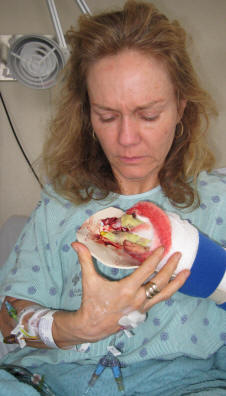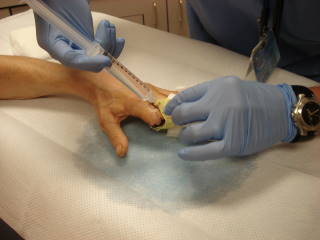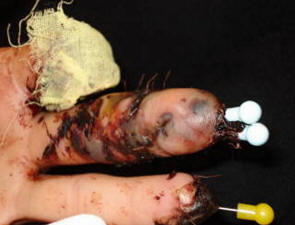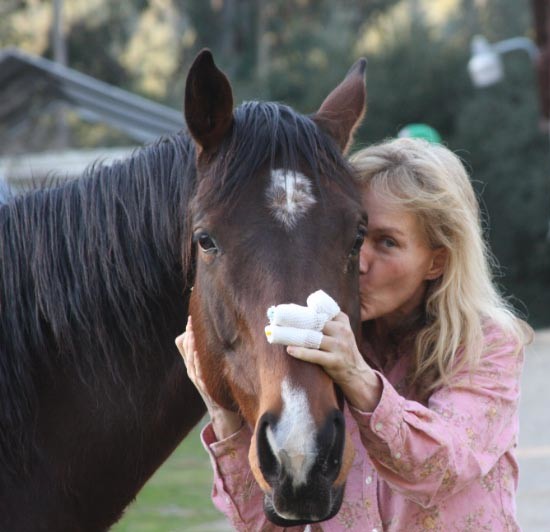In our “Baby-Booming” aging population an increased number of patients referred to our wound-care centers with atypical wounds (eg. vasculitis.)
• Peripheral arterial disease prevalence increases 14.5% after the age of 70.
• More than one half a million venous leg ulcers per year occur and two million new pressure ulcers per year require treatment.
• Type II diabetes is spiking and 15 % of all adult diabetics will develop at least one diabetic foot ulcer during their lifetime …
• The healing of these wounds is labor-intensive and requires gentle but attentive attention from a doctor (MD, DO) or nurse (RN) with specialist training in problem wound management, Tender Loving Care – TLC – from people you trust because they care for you.
Since chronic wounds are usually idiosyncratic (unique to that person) some wounds take many months to resolve. Some may require adjunctive hyperbaric oxygen (HBOT) therapy to restore quality of life. HBOT is only recommended if there is no improvement of the wound after thirty days of intensive standard medical attention to the wound area.
Why come to a wound-care center rather than go to a hospital?
Apart from cost issues (less cost at an off-campus wound-care center) and feeling that you are in a personal and healing environment, some common sense answers follow …
• Lack of wound care training in medical schools, residency programs often mean that there is a turnover of staff – and oftentimes there are new hands and eyes tending to your old wounds.
• Advances in diagnostic modalities quickly get into a Wound Care Center as do the constant advances in cellular and molecular biology.
So too with
• Development of advanced therapeutic modalities, and
• Development of evidence-based medicine treatment algorithms.
NOTE: If you are suffering from a serious or fresh traumatic wounding injury, call 911.
In order to create a RESTORATION RELATIONSHIP, every Center’s Program Goals should be to: • Heal chronic wounds in a timely fashion,
• Salvage limbs,
• Promote the multidisciplinary team approach,
• Elevate the community standard of wound care,
• Practice evidence-based medicine.
Trauma patient Shayna’s HBOT miracle
Shayna suffered a crush amputation of three fingers of her primary hand as a result of trauma from an accident loading a horse into a trailer.
Christmas Day came full of high hopes for success. However, five days later, the wound turned bad and Shayna was given a week for a miracle to take place in her fingers. She contacted world-renowned hyperbaric specialist Dr. Fred Cramer who advised immediate BID HBOT Tx at 3 ata. Shayna travelled to the San Diego Center.
After three days of the BID gangrene protocol, the Tx level was reduced to 2.4 ata, once each day. The series of pictures below show the response of the wound after only two HBOT treatments.
All plans for radical surgical revision (removal of the top joints of middle finger) were dropped. It was hoped that the hand would return to full functional use after more rehabilitation. However, seven months after the accident, scar tissue was fusing joints and it was doubted that full use of three of these fingers would never return.
Shannon wore a wrist brace for 12 hours each day. Pictured above right, six months post-trauma – the picture clearly demonstrates that HBOT treatments can be effectively provided at a lower cost than in a hospital hyperbaric medicine department. The costs savings to the patients, insurance companies and Medicare are significant.
However, the real question begging an answer – what of the horse that caused this accident?
“Cowgirls don’t cry.”
As a licensed medical practitioner, Shayna utilised complimentary alternative medical practices that contributed to this impressive outcome including dietary changes and acupuncture.
What a great result.

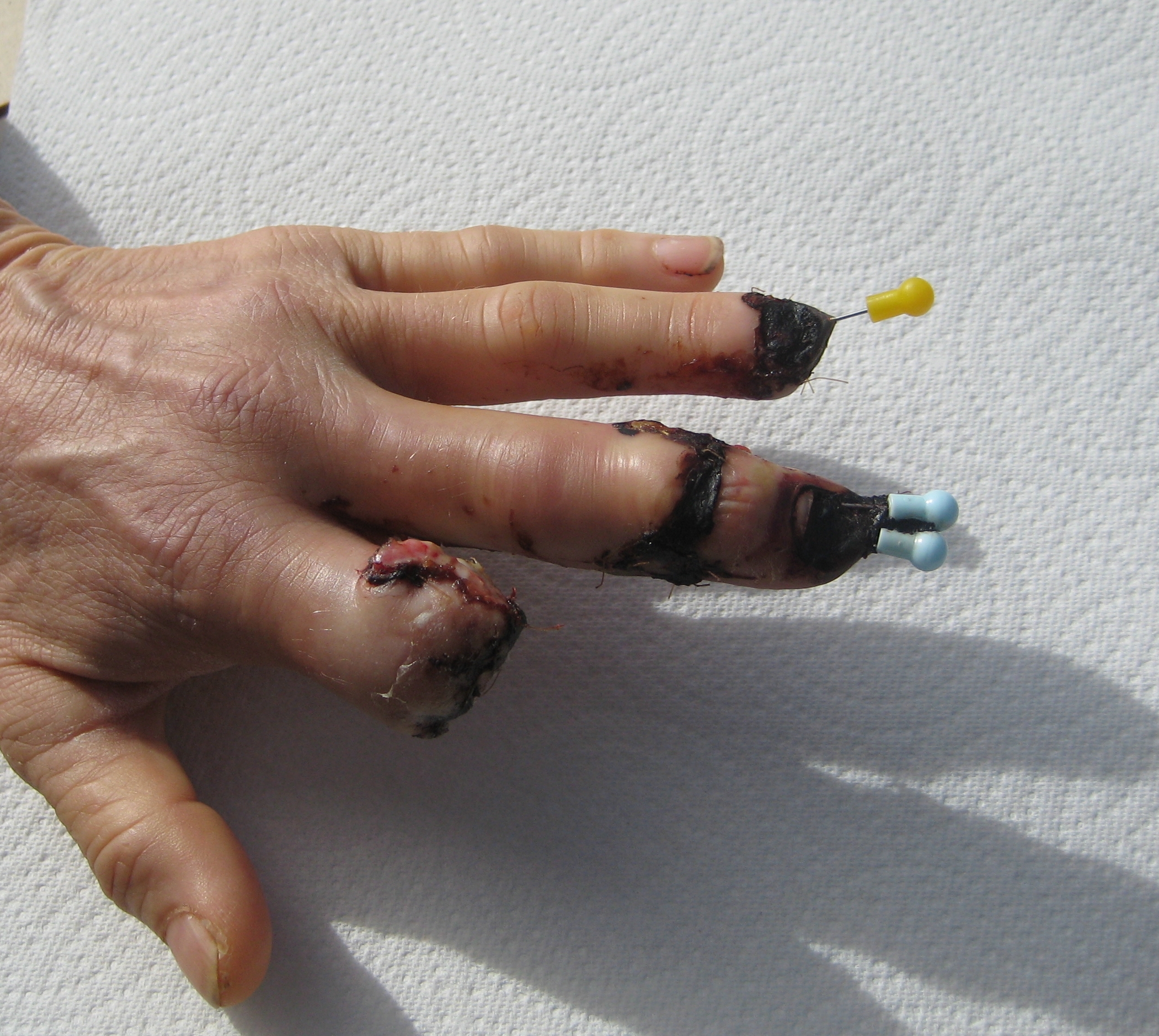
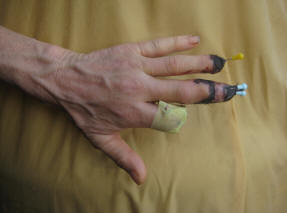
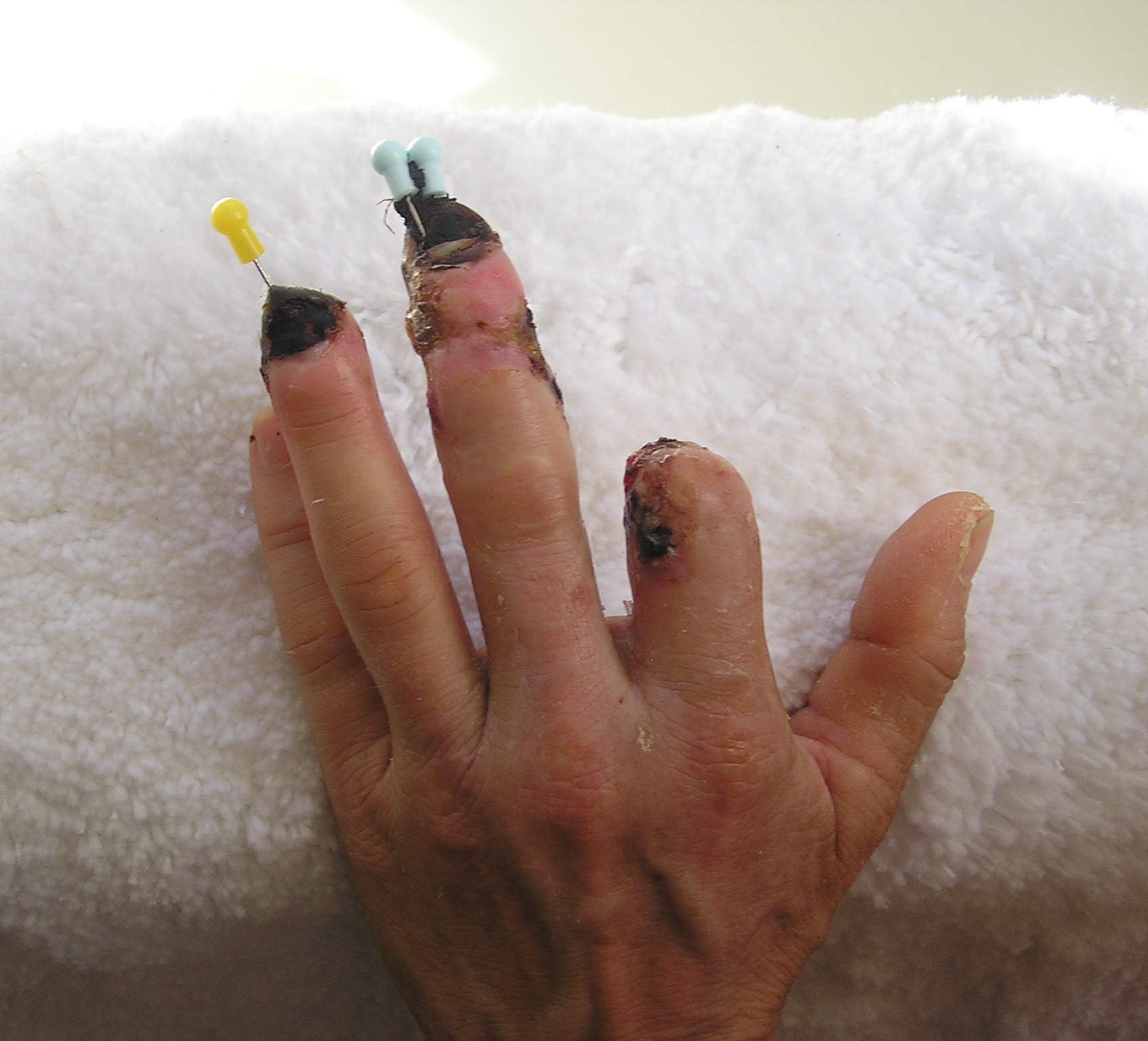
The response to HBOT was evident after only 48 hours and two treatment sessions

